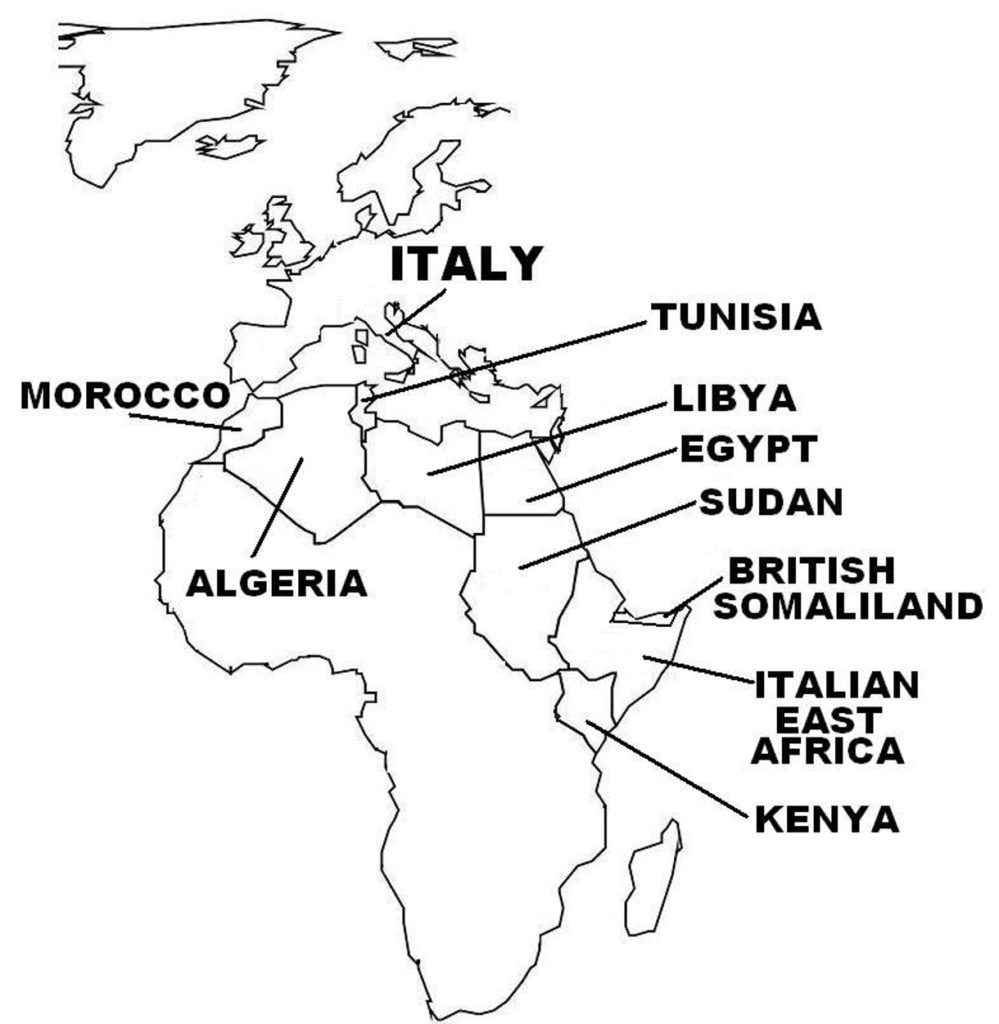On February 19, 1943, Axis and Allied forces began the five-day Battle of Kasserine Pass in Tunisia. German Field Marshal Erwin Rommel, leading the Axis forces comprising German Afrika Korps and Italian units, planned to punch a hole in the Allied lines through the Kasserine Pass, a gap in the Grand Dorsal chain of the Atlas Mountains in west central Tunisia. On February 20, his forces broke through, throwing back the inexperienced American forces a distance of 80 km west of Faid Pass, inflicting heavy casualties and destroying or capturing substantial Allied equipment.
American forces soon rallied, and with British reinforcements, managed to break the Axis attack and hold the exits on the mountain passes in western Tunisia.

(Taken from Italian Campaign – Wars of the 20th Century – World War II in Europe)
In East Africa, the Italian Army achieved success initially, launching offensives from Italian territories of Ethiopia, Eritrea, and Italian Somaliland and driving away the British from British Somaliland, and seizing some border regions in British-controlled Sudan and Kenya (Figure 34). At this stage of World War II, Britain’s overseas possessions were extremely vulnerable, as British efforts were diverted to the homeland to confront the ongoing German air offensives (Battle of Britain, separate article). But with the Luftwaffe scaling down operations in Britain as 1941 progressed, the British soon counter-attacked in East Africa, throwing back the Italians and regaining lost territory, and then capturing Ethiopia, Eritrea, and Italian Somaliland, and forcing the surrender of the remaining Italian forces in East Africa.
In North Africa, which was a major battleground in World War II, the Italian Army also achieved some success initially, launching from Libya and advancing 62 miles (100 km) into British-administered Egypt in September 1940, while taking advantage of the desperate situation of the British in the ongoing Battle of Britain. In December 1940, the British counter-attacked and threw back the much larger Italian forces into Libya, taking some 130,000 Italian prisoners and advancing 500 miles (800 km) to El Agheila. Now poised to expel the Italian Army from North Africa altogether, the British were forced to halt their offensive to transfer some of their troops to Greece, to help contain a new Italian offensive there.
The pause allowed Hitler to come to the aid of his beleaguered ally Mussolini, in February 1941, sending the first units of the German Afrika Korps led by General Erwin Rommel, to fight alongside the Italian forces, which also were bolstered by reinforcements arriving from Europe. A see-saw battle ensued for over a year, with one side pushing the other hundreds of miles through the desert, and then the other side launching a counter-offensive that threw back the other and penetrating deep into enemy territory.
Then in October-November 1942, the British 8th Army decisively defeated the German-Italian force at the Second Battle of El Alamein, forcing the Axis to retreat 1,600 miles (2,600 km) to the Libya-Tunisia border.
Also in November 1942, an American-British force landed at Morocco and Algeria, which were administered by Vichy France. After a short period of fighting, the Americans and British succeeded in persuading French forces there to switch sides to the Allies. American-British-French forces from the west and the British 8th Army from the east then attacked and encircled the German-Italian forces in Tunisia, and in May 1943, expelled the Axis from North Africa. As a result, Italy lost all its African territories.
